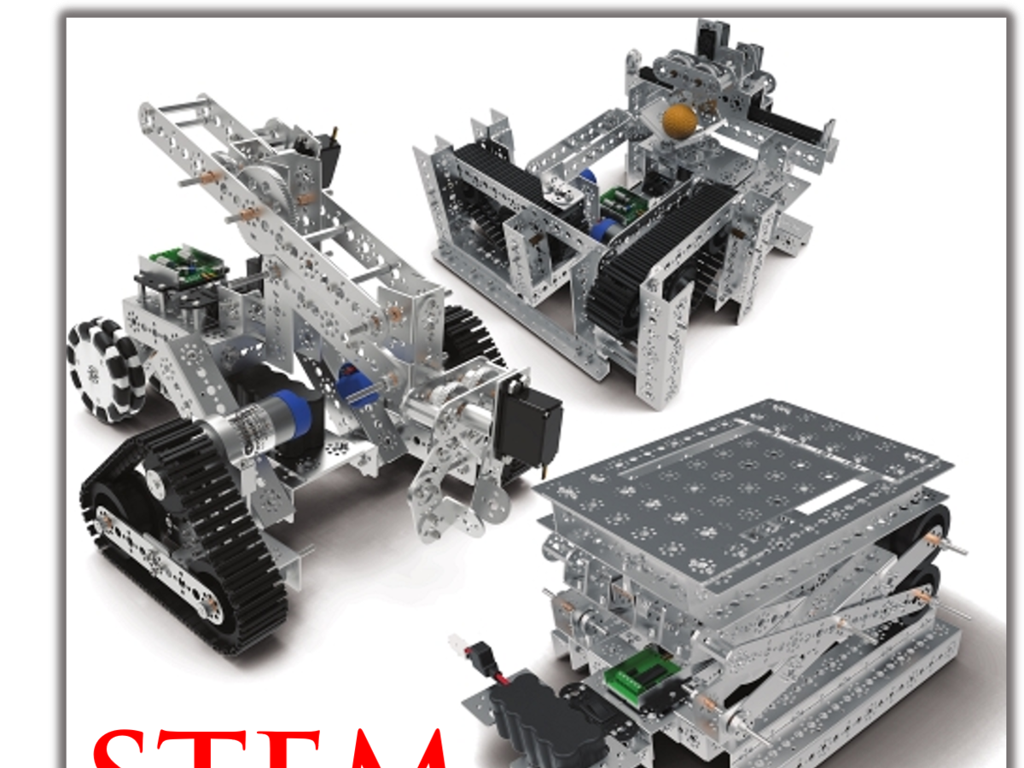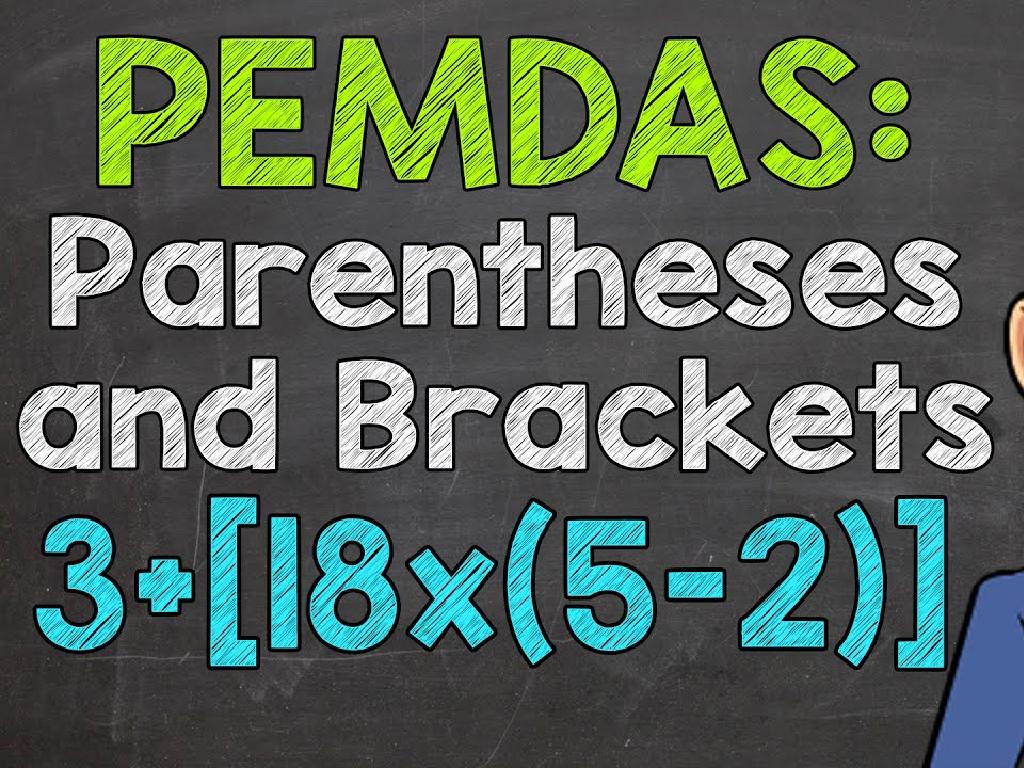Identify Properties Of An Object
Subject: Science
Grade: Second grade
Topic: Materials
Please LOG IN to download the presentation. Access is available to registered users only.
View More Content
Exploring Object Properties
– What are materials?
– Properties define objects
– Hardness, color, texture, and flexibility
– Observing like a scientist
– Use senses to notice properties
– Fun with materials!
|
This slide introduces the concept of materials and their properties to second-grade students. Begin by explaining that everything around us is made of materials, which have different characteristics called properties. Discuss how properties like hardness, color, texture, and flexibility help us identify and classify objects. Encourage the students to observe everyday items and think about their properties. Engage them with examples, such as comparing the hardness of a pencil to a rubber eraser or the texture of sandpaper versus a cotton ball. This will prepare them for hands-on activities where they will explore and describe the properties of various objects, fostering their observational skills and curiosity about the physical world.
Exploring Materials Around Us
– Understanding materials
– Materials are substances objects are made from.
– Materials make up objects
– Common materials: Wood, Metal, Plastic, Glass
– Examples: Desk (wood), Spoon (metal), Bottle (plastic), Window (glass)
– Observing materials in daily life
– Look around and name objects and their materials.
|
This slide introduces the concept of materials to second-grade students. Begin by explaining that everything they can touch is made from some material. Materials are the substances that make up the objects we use every day. Provide examples of common materials such as wood, metal, plastic, and glass, and relate them to familiar objects like a wooden desk, a metal spoon, a plastic bottle, and a glass window. Encourage the students to observe and interact with their surroundings by identifying the materials that make up various objects they encounter in their daily lives. This activity will help them understand the diversity of materials and their properties.
Exploring Properties of Materials
– Materials have different properties
– Properties tell us how materials look, feel, and behave
– Examples: color, shape, texture, size
– Red, round, rough, big or blue, square, smooth, small
– Understanding properties is crucial
– Knowing properties helps us predict how materials will act
– Properties help us choose materials
– We pick materials for tasks based on their properties
|
This slide introduces the concept of properties of materials to second-grade students. It’s important to explain that properties are characteristics that help us describe and identify different materials. Use everyday objects to illustrate properties such as color, shape, texture, and size. Emphasize the importance of understanding these properties by discussing how they affect the use of materials in various contexts, such as building or art projects. Encourage students to think about how they choose materials for different tasks based on these properties. For example, why would we choose a soft material for a pillow or a strong material for building a bridge?
Exploring Object Properties: Color and Shape
– Colors describe objects
– Like a red apple or blue sky
– Shapes define object use
– A round ball rolls, a flat board doesn t
– Recognizing colors
– Understanding shapes
|
This slide introduces the students to the basic properties of objects, focusing on color and shape. Color is a property that helps us identify and describe objects, such as a red apple or the blue sky. Shape informs us about how an object can be used; for example, a ball is round so it can roll, whereas a flat board cannot. Encourage the students to observe objects around them and describe them using their color and shape. This will help them understand how these properties can give us clues about the nature and function of different objects in our environment.
Exploring Texture and Size of Objects
– Understanding texture
– Texture means how things feel when touched
– Texture: rough or smooth?
– Is it like sandpaper (rough) or glass (smooth)?
– Learning about size
– Size measures how big or small something is
– Comparing sizes: small vs. large
– Think of a tiny ant versus a big elephant
|
This slide is aimed at helping second-grade students understand the concepts of texture and size as properties of objects. Texture refers to the feel of an object’s surface, which can be smooth like a marble or rough like sandpaper. Size is a measure of how big or small an object is, illustrated by comparing a small pebble to a large rock. Encourage students to touch different surfaces and compare objects of different sizes to grasp these concepts better. Activities can include sorting objects based on texture, comparing objects to determine size, and using descriptive words to communicate their observations.
Why Properties Matter
– Understanding material properties
– Choosing materials for tasks
– Helps select the best material for building, like plastic for toys or metal for bikes.
– Predicting material behavior
– Knowing if a material is flexible, strong, or waterproof can tell us how it will act.
– Importance in everyday life
|
This slide aims to explain to second-grade students the significance of understanding the properties of materials in science. By knowing whether a material is hard or soft, heavy or light, transparent or opaque, we can make better decisions about what materials to use for different purposes. For example, we choose metal for constructing bicycles because it is strong and durable, while we use plastic for toys because it is lightweight and can be molded into various shapes. Understanding properties also helps us predict how materials will react under certain conditions, like whether an object will float in water or how it might change when heated. This foundational knowledge is crucial for students as they explore the world around them and begin to understand the basics of material science.
Let’s Practice Identifying Properties!
– Observe various objects
– Discuss each object’s properties
– Properties include shape, color, texture, and size
– Consider the materials used
– Is it made of plastic, metal, wood, or fabric?
– Think about texture, color, size
– Is it rough, smooth, shiny? What color and how big or small?
|
This slide is meant to engage second-grade students in a hands-on activity to identify and discuss the properties of different objects. Teachers should bring a variety of objects to class and encourage students to observe and touch them, thinking about their properties such as shape, color, texture, and size. Ask the students to consider what materials the objects are made from, such as plastic, metal, wood, or fabric. This activity will help students understand that objects can be described in many ways and that their properties are related to the materials they are made from. The teacher should facilitate the discussion, ensuring that each student participates and understands the concept of properties of materials.
Class Activity: Material Hunt
– Let’s explore materials in our classroom
– Find objects and describe them
– Look for size, shape, color, and texture
– Use your worksheet to record properties
– Write down your findings on the worksheet
– Share what you discovered with the class
– We’ll discuss as a group afterwards
|
This activity is designed to help students observe and describe the properties of different materials in a fun and interactive way. Set up various stations with a variety of objects around the classroom. Encourage students to touch, look at, and describe the objects they find. They should focus on identifying the size, shape, color, and texture of each item. Provide a worksheet for them to record their observations. After the hunt, gather the students and discuss what they found, guiding them to understand how different properties are used to identify and categorize materials. Possible variations of the activity could include grouping objects by material type, comparing objects with similar properties, or even a scavenger hunt for items with specific characteristics.
Conclusion: Properties of Objects
– Kudos to our junior scientists!
– Mastered identifying object properties
– Properties aid material comprehension
– Properties like color, shape, and size tell us about an object’s nature
– They help us utilize materials effectively
– Knowing properties can guide us in choosing the right material for a task
|
Well done to the class for their hard work and enthusiasm in learning about the properties of objects. It’s important to reinforce the idea that understanding the properties of materials is crucial in everyday life. It helps us make decisions about which materials to use for different purposes. For example, we use waterproof materials for raincoats and hard materials for construction. Encourage the students to observe objects around them at home or in school and think about their properties and uses. This will help solidify their understanding and application of the concepts learned.






